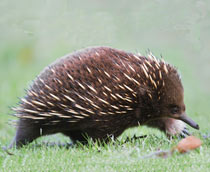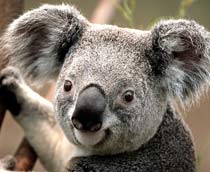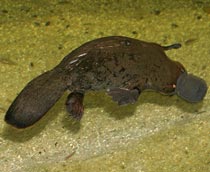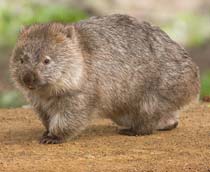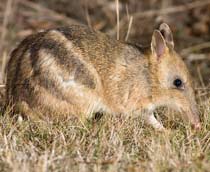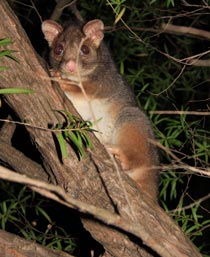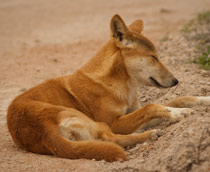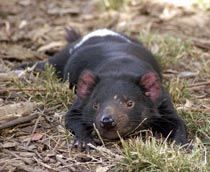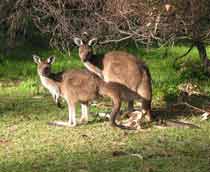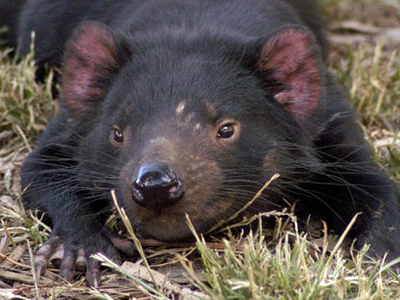
Mammals - Australasian Mammals
Australasia is made up of Australia, New Zealand, New Guinea and Pacific Ocean islands. Australia is the world's sixth-largest country by total area. Given its sheer size and varied climate, there is a wealth of fauna that inhabit Australia. New Zealand is split into the North Island and South Island. The capital of New Zealand is Wellington in the South Island and its largest city is Auckland in the North Island. Before humans arrived, New Zealand was covered in roughly 80% of forest.
New Guinea is in the southwest Pacific Ocean and is the second largest island in the world, after Greenland. Compared to Australia, New Guinea has much more rainfall and a higher active volcanic geology. In spite of this, both New Guinea and Australia have similar animal fauna.
- Order: Monotremata
- Family: Tachyglossidae
- Genus: Tachyglossus
- Species: T. aculeatus
- Also called the spiny anteater.
- Has the ability to swim and uses the snout rather like a snorkel.
- Its stomach has low levels of acidity which is rare in mammals.
- Order: Diprotodontia
- Family: Phascolarctidae
- Genus: Phascolarctos
- Species: P. cinereus
- A much-loved and easily identified mammal native to Australia.
- Although 'koala bear' is still used, the koala is in fact not a bear.
- Koala fossils dating 20 million years ago have been found.
- Order: Monotremata
- Family: Ornithorhynchidae
- Genus: Ornithorhynchus
- Species: O. anatinus
- Due to its strange appearance, the platypus perplexed European naturalists when they first clapped eyes on it.
- It was even thought to be an elaborate fraud!
- Can release venom, which is rare in mammals.
- Order: Diprotodontia
- Family: Vombatidae
- A wombat burrow can be as long as 20 metres.
- Wombats are adept at digging complicated tunnels with their strong legs and sharp claws.
- The entrance to the female wombat's pouch faces backwards.
- This is to prevent dirt from entering it when it is burrowing.
- Order: Peramelemorphia
- Family: Peramelidae
- Genus: Perameles
- Species: P. gunnii
- A nocturnal marsupial which is a Near Threatened species.
- The gestation period is only 12 days - one of the shortest of any mammal.
- In perfect conditions, females can have up to five litters per year.
- Class: Mammalia
- Infraclass: Marsupialia
- Order: Diprotodontia
- Suborder: Phalangeriformes
- Native to Australia and New Guinea, introduced to New Zealand.
- Numbers are so large in New Zealand, it is now considered a pest.
- Some species have adapted to an urban environment.
- The common ringtail possum (pictured) eats a special type of faeces.
- This behaviour is called coprophagia and is similar to that seen in rabbits.
- Order: Carnivora
- Family: Canidae
- Genus: Canis
- Species: C. lupus
- A wild dog only found in Australia, predominantly in the outback.
- They are able to react to social cues and gestures from humans, something that wolves cannot do.
- The diet is massively varied - up to 170 species have been identified.
- Order: Dasyuromorphia
- Family: Dasyuridae
- Genus: Sarcophilus
- Species: Sarcophilus harrisii
- In the wild, found only in Tasmania.
- Is the largest carnivorous marsupial in the world.
- The Tasmanian devil's large head and neck allow it to generate the strongest bite per unit body mass of any living mammal.
- Order: Chiroptera
- Family: Pteropodidae
- Genus: Pteropus
- Species: P. conspicillatus
- Also known as the Spectacled Fruit Bat
- Found in New Guinea and Queensland.
- Their habitat is forests, especially rainforests.
- Youngsters get together in nursery trees in the colony.
- They fly out for increasing distances with the colony at night and are 'parked' in nursery trees, often kilometres distant from the colony, and are brought back to the colony in the morning.
- Order: Diprotodontia
- Family: Macropodidae
- Genus: Macropus
- A kangaroo can hop at up to 60 kmh (40 mph).
- It can also leap over obstacles up to 3 m (10 ft) high.
- Because of the unusual shape of its legs and its bulky tail a kangaroo can't walk or move backwards very easily.
Ready for more?
not all...
quizzers. Try to win a coveted spot on our Hall of Fame Page.





